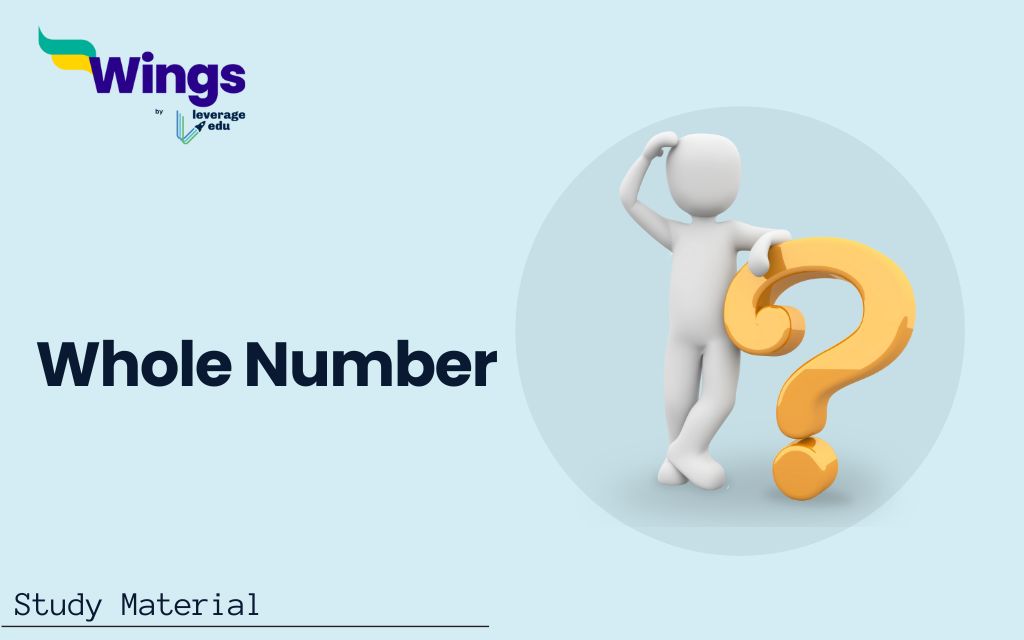Whole numbers (W) form the foundation of arithmetic, encompassing all non-negative integers from zero onwards {W =(0,1,2,3,4,…)}. Understanding their properties and operations is fundamental to mastering mathematics. In this blog, we will explore the important characteristics of whole numbers, including their properties such as closure under addition and multiplication, the concept of identity elements, and the role they play in everyday calculations. Whether you’re a student looking into the basics or a curious learner, this blog will provide you with the knowledge to learn more about whole numbers confidently.
Contents
What are Whole Numbers?
Whole numbers are a set of numbers that include all the non-negative integers from zero upwards. In mathematical notation, they are represented as W ={0,1,2,3,4,…}. Whole numbers are essentially natural numbers (positive integers) including zero.
Important Properties:
- Closure under Addition and Multiplication: When you add or multiply two whole numbers, the result is always another whole number. For example, 2+3=5 and 2×3=6, both results are whole numbers.
- Identity Elements:
- Additive Identity: The number 0 is the additive identity for whole numbers. Adding zero to any whole number n gives n itself: n+0=n.
- Multiplicative Identity: The number 1 is the multiplicative identity for whole numbers. Multiplying any whole number nnn by 1 gives n: n×1=n.
- Non-negativity: Whole numbers are always non-negative, meaning they are greater than or equal to zero.
- Counting and Cardinality: Whole numbers are commonly used for counting objects and determining cardinality (size or quantity).
- Basic Operations:
- Addition and Subtraction: Whole numbers can be added or subtracted following basic arithmetic rules.
- Multiplication and Division: Multiplication involves repeated addition, and division is the inverse operation of multiplication.
- Application in Mathematics and Real Life: Whole numbers are foundational in mathematics, and used in various calculations, measurements, and scenarios where counting and discrete quantities are involved.
Examples:
- W = 0,1,2,3,4,5,6,………..
Also Read: What are Composite Numbers from 1 to 100?
The Power of Whole Numbers
Whole numbers aren’t just for counting objects. They empower us to perform various mathematical operations:
- Addition: We combine whole numbers to find a total quantity (e.g., 3 apples + 2 apples = 5 apples).
- Subtraction: We take away a whole number from another to find the difference (e.g., 10 cookies – 5 cookies = 5 cookies left).
- Multiplication: We repeatedly add a whole number to itself to find the total (e.g., 4 x 3 = 4 added to itself 3 times, equaling 12).
These basic operations form the building blocks of more complex math, allowing us to solve problems in various fields like finance, engineering, and even computer science.
Properties of Whole Numbers
Here are all the key properties of whole numbers:
Closure under Addition and Multiplication Property:
- When you add two whole numbers, the result is always another whole number. For example, 2+3=5.
- When you multiply two whole numbers, the result is always another whole number. For example, 2×3=6.
Associative Property:
- The addition and multiplication of whole numbers are associative operations. This means that the way numbers are grouped in an operation does not affect the result.
- For example, (2+3)+4=2+(3+4) and (2×3)×4=2×(3×4).
Commutative Property:
- The addition and multiplication of whole numbers are commutative operations. This means that the order of numbers does not affect the result.
- For example, 2+3=3+2 and 2×3=3×2.
Identity Elements:
- Additive Identity: The number 0 is the additive identity for whole numbers. Adding zero to any whole number n gives n itself: n+0=n.
- Multiplicative Identity: The number 1 is the multiplicative identity for whole numbers. Multiplying any whole number nnn by 1 gives nnn: n×1=n.
Distributivity:
- Multiplication distributes over addition in whole numbers. For example, 2×(3+4)=2×3+2×4.
Non-negativity:
- Whole numbers are always non-negative, meaning they are greater than or equal to zero.
Closure under Subtraction:
- Subtraction of whole numbers may not always result in a whole number unless the subtraction does not lead to a negative number.
Whole Numbers Solved Examples
Here are five solved examples involving whole numbers:
- Example 1: Addition Calculate the sum of 25 and 17.
25+17=42
Answer: 42 - Example 2: Multiplication Find the product of 8 and 6.
8×6=48
Answer: 48 - Example 3: Subtraction Subtract 12 from 30.
30−12=18
Answer: 18 - Example 4: Division Divide 45 by 9.
45/9=5
Answer: 5 - Example 5: Application Problem A shopkeeper had 85 pencils. If she sold 42 pencils, how many pencils does she have left?
85−42=43
Answer: She has 43 pencils left.
Also Read: Questions of Logical Problems Reasoning
FAQs
You would say all the numbers from 1 to 100 if you were counting them. Starting with 1, go through 1, 2, 3, 4, 5, 6, 7, 8, 9, 10, and so on, until you reach 100. In addition to zero, whole numbers are all positive values from one to infinity.
It is important to note that whole numbers are real numbers and do not have any fractions, decimals, or negative numbers. Not a part or decimal of any number, zero is just zero. This is neither good nor bad. As a whole number, zero follows the rule.
It’s clear that 0 is the smallest whole number and 1 is the smallest natural number. There is no biggest whole number, though, because every number comes after it. So, there isn’t a biggest whole number.
This was all about “Whole Numbers”. For more such informative blogs, check out our Study Material Section, or you can learn more about us by visiting our Indian exams page.
 One app for all your study abroad needs
One app for all your study abroad needs














